Abstract
1. The volume and time components of individual breaths have been investigated under 'steady-state' conditions during air-breathing in fifteen subjects and, in a further six subjects, also during the addition of 1-5 and 3% CO2 to the inspired gas. 2. A computer-assisted method has been used to derive from the air flow record the individual breath values of tidal volume (VT), inspiratory duration (TI), expiratory duration (TE) and cycle duration (TC = TI + TE) for a sequence of breaths in the various steady-state conditions. 3. When the subjects were breathing room air, for breath sequences of over 200 breaths (n = 228-365), mean values of TI (TI) mostly lay between 1 and 2-5 sec, TE between 2-0 and 3-5 sec and VT between 0-4 and 0-91. The distributions of VT, TI and TE were in general unimodal. 4. Significant negative correlations between VT and F, and positive correlations between VT and TC, have been confirmed. 5. In all fifteen subjects, a highly significant positive correlation existed between VT and TI (mean r = +0-704), which was stronger than that between VT and TC (mean r = +0-533). Weaker positive correlations were demonstrated between VT and TE, and between TI and TE (mean r = +0-359 and +0-381 respectively). 6. The intercept of the regression of VT on TI passed close to the origin, typically slightly positive on the VT axis (mean = +0-0991.). This, coupled with the strong positive correlation between VT and TI, indicates that the mean inspiratory flow rate (VI = VT/TI) for each breath is held relatively constant from breath to breath. 7. In the six subjects studied during CO2 inhalation, the mean % contributions of VT and F to the increase in ventilation associated with breathing 3% CO2 were 75 and 25% respectively. 8. At the three different levels of ventilation, neither VT, TI nor TE showed a wholly consistent trend, although VT tended to increase, TE to decrease and TI to be unchanged. In contrast, the average values of VI (VI) consistently increased as the chemical stimulus was raised. 9. It is concluded that the previously observed tendency for ventilation to be held constant from breath to breath during steady-state breathing depends predominantly on the tendency for VI to be held constant. Close restraints are evidently not imposed on the individual values of VT and TI under these conditions. The neural mechanism generating breathing appears to control ventilation principally by regulating the rate of inspiratory air flow and secondarily TE.
Full text
PDF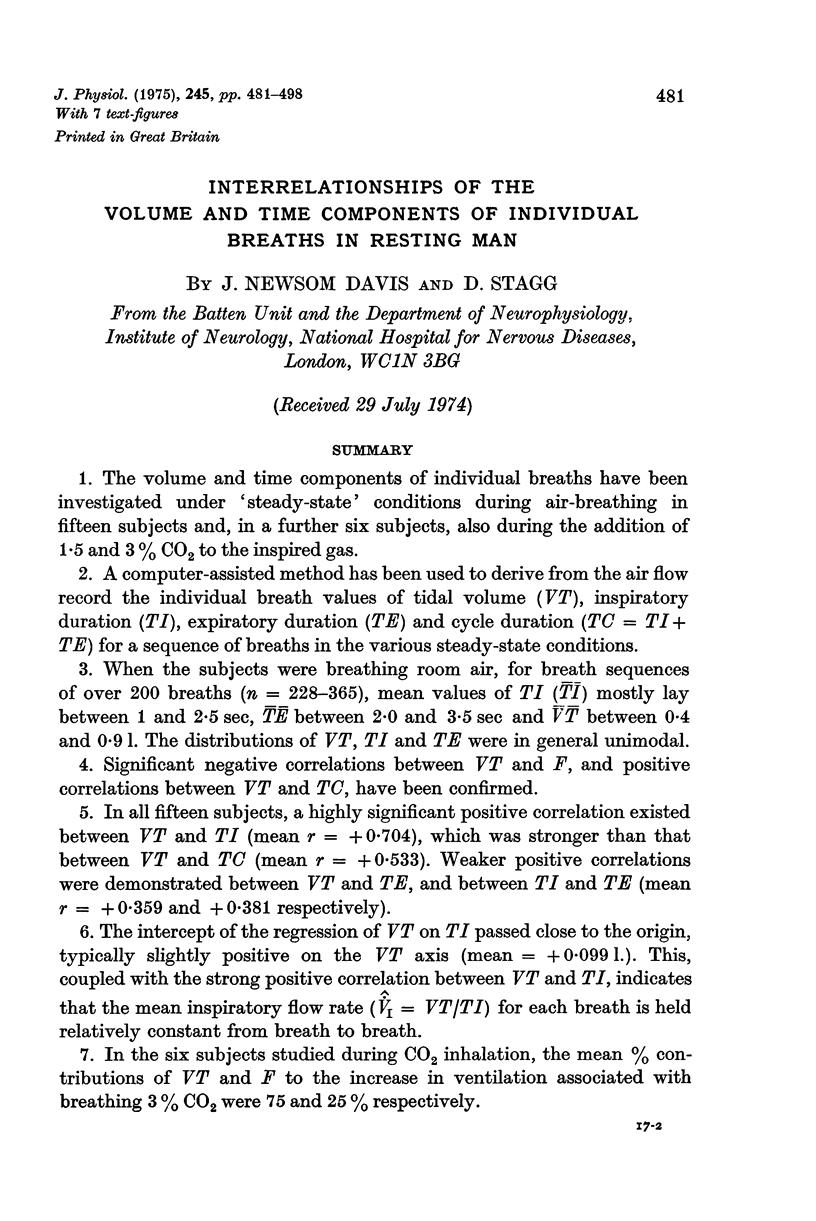
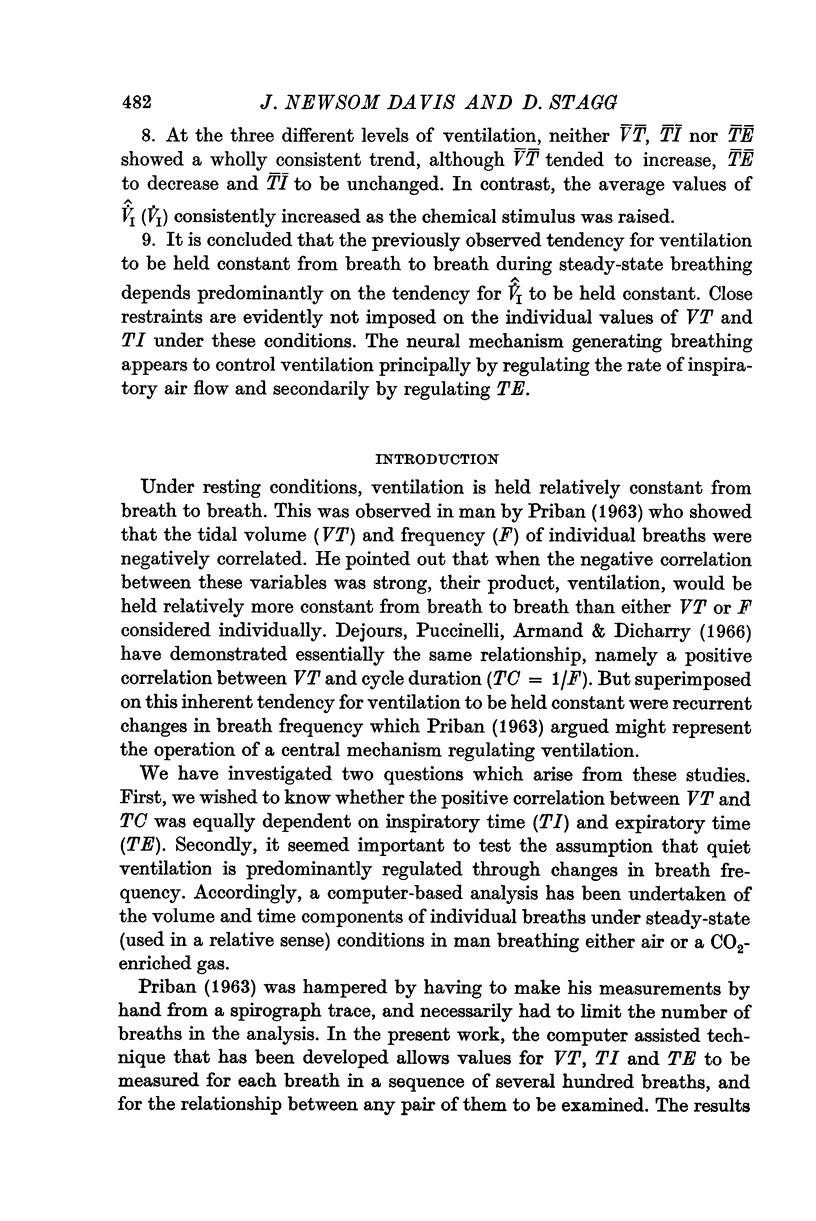
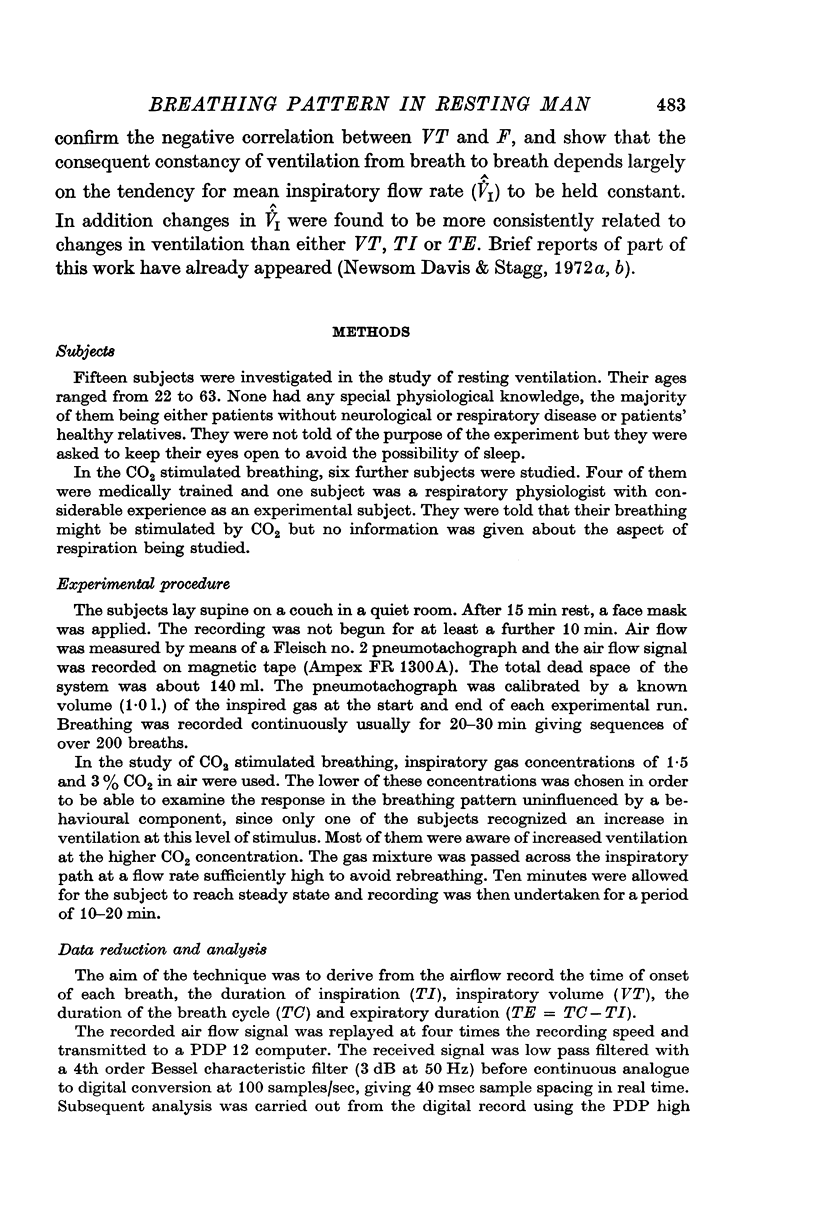
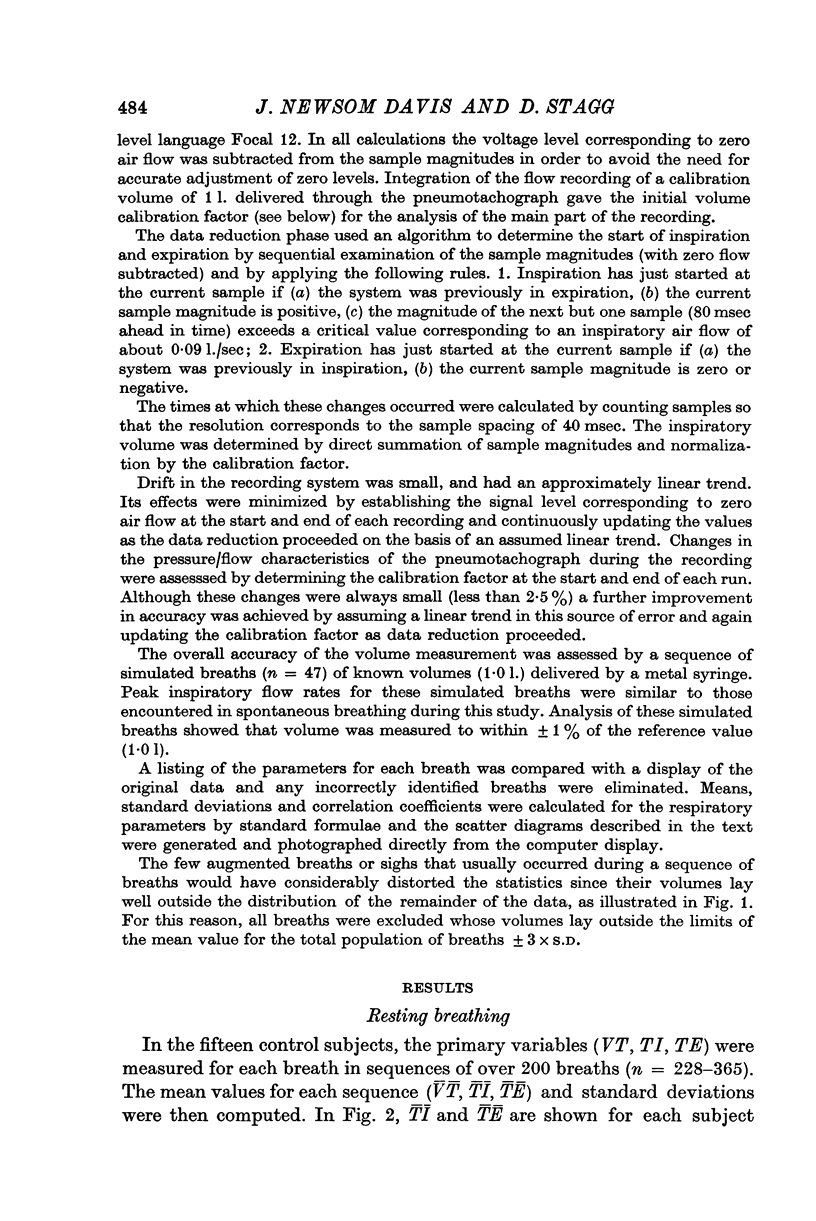
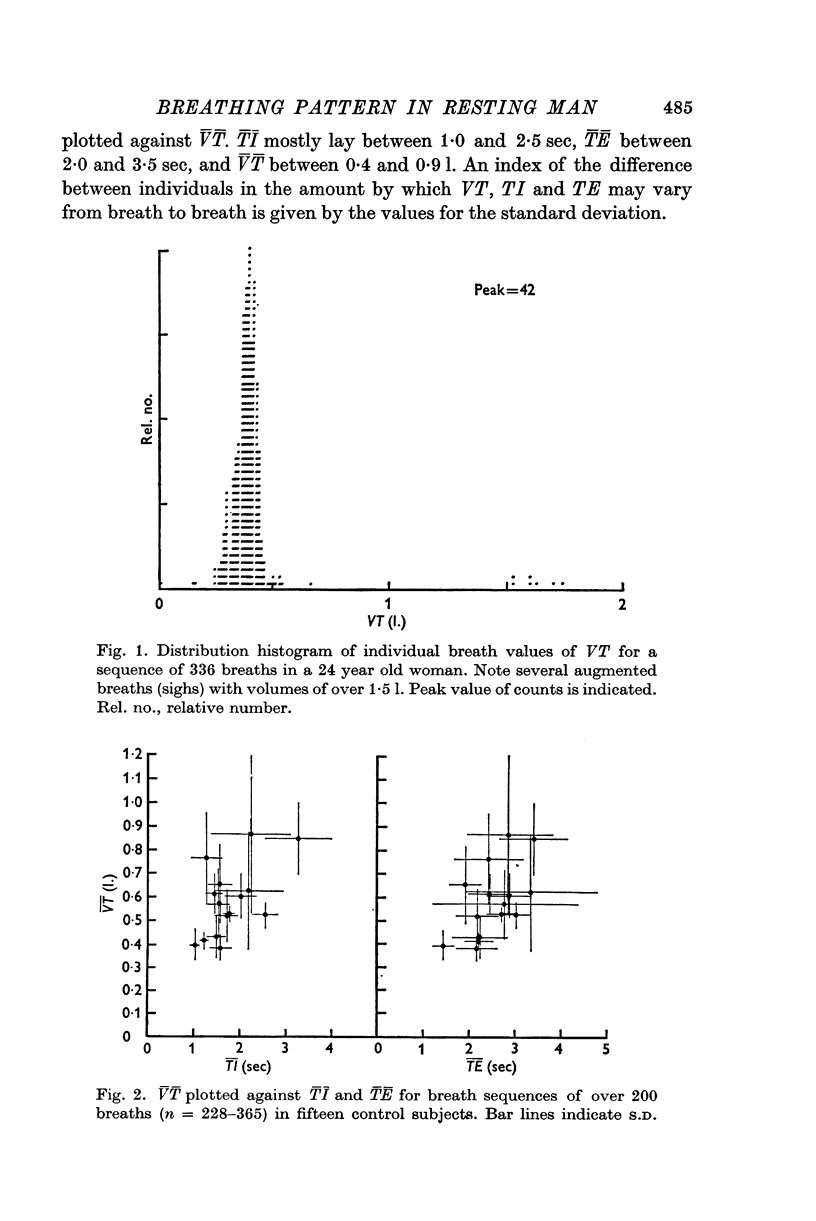
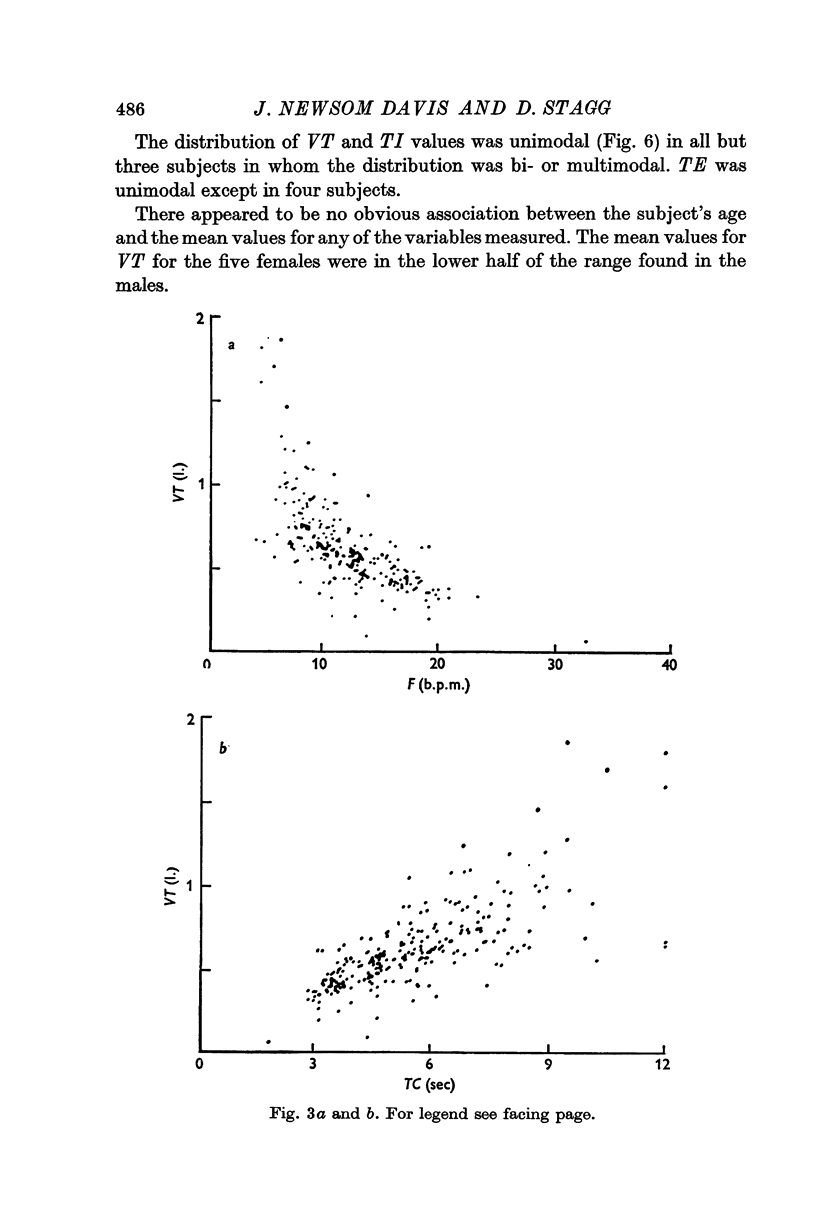

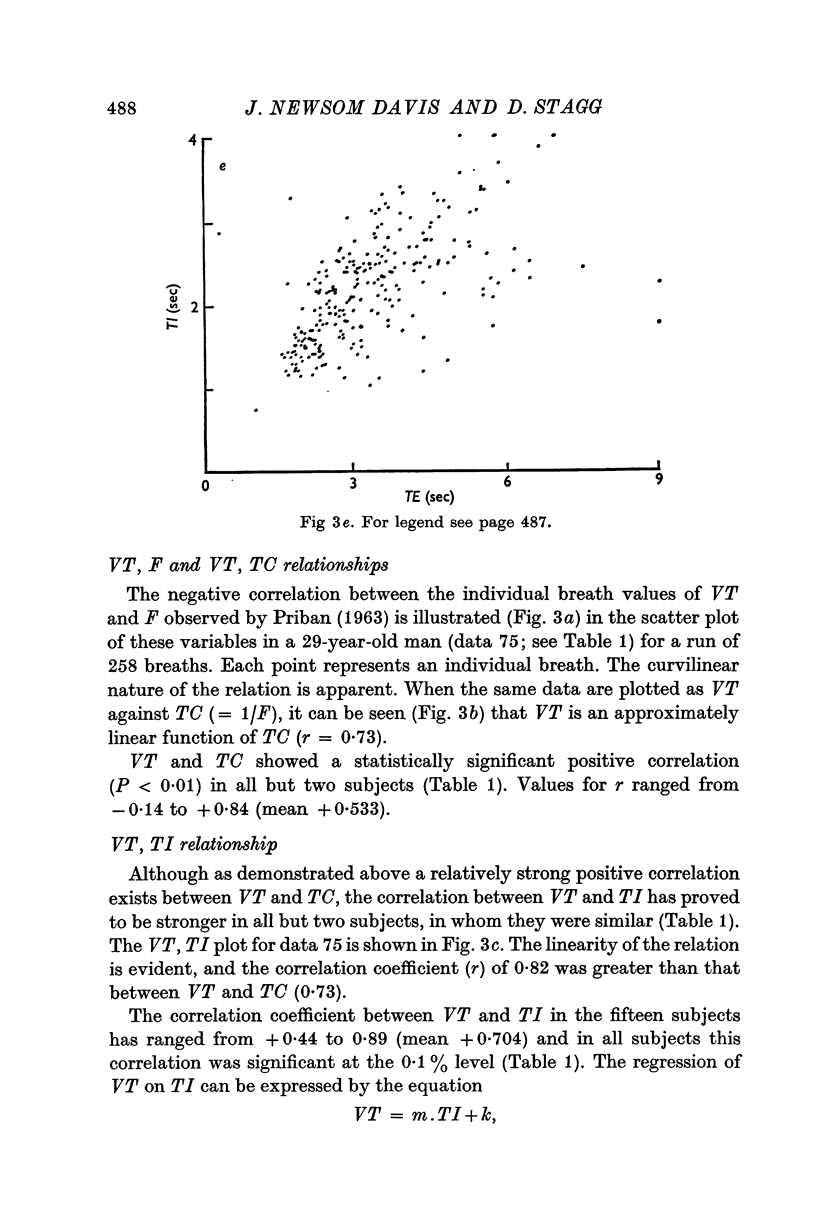
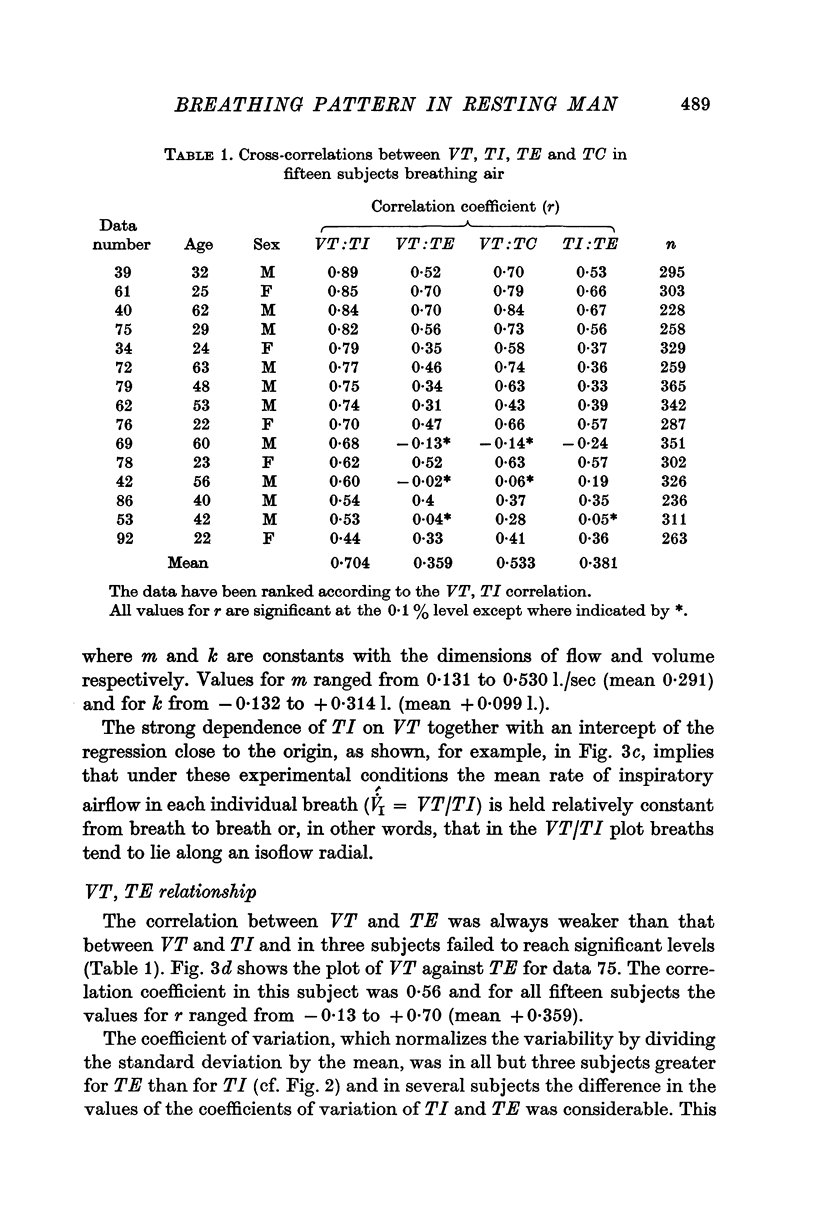
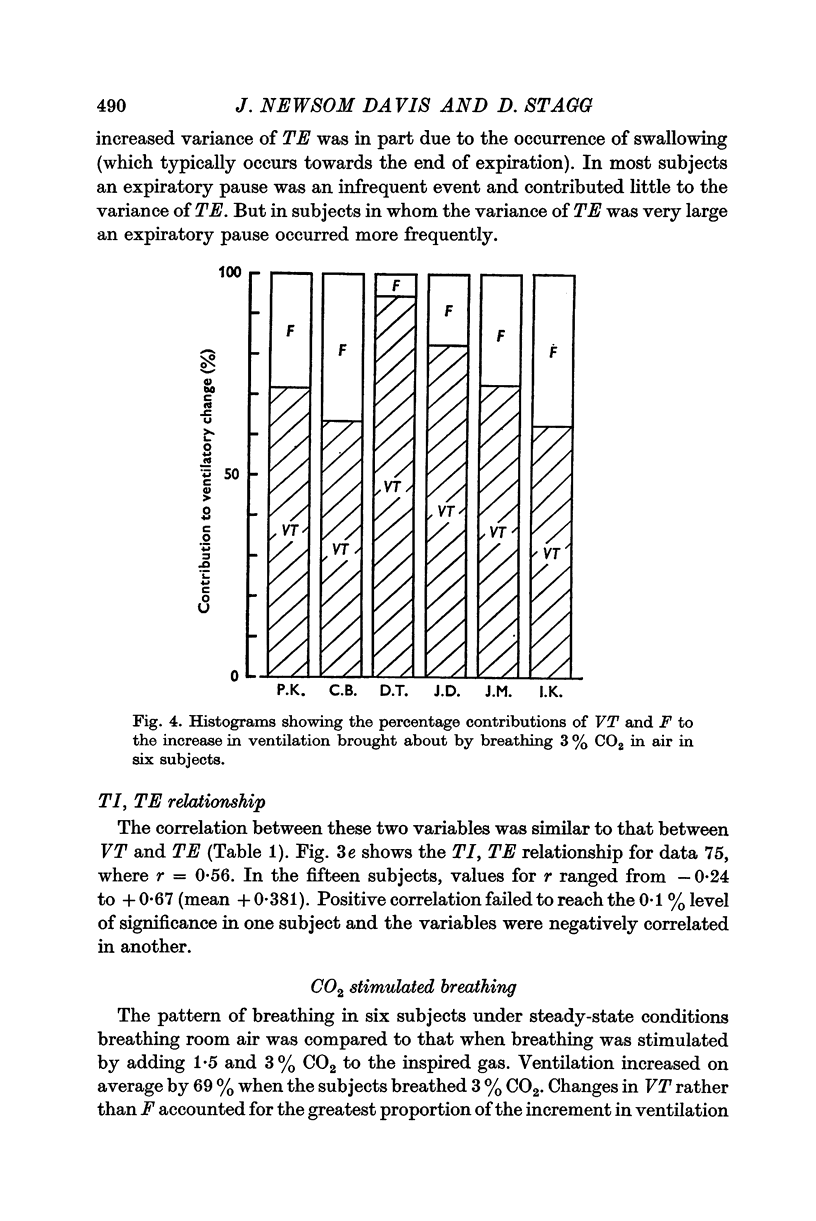
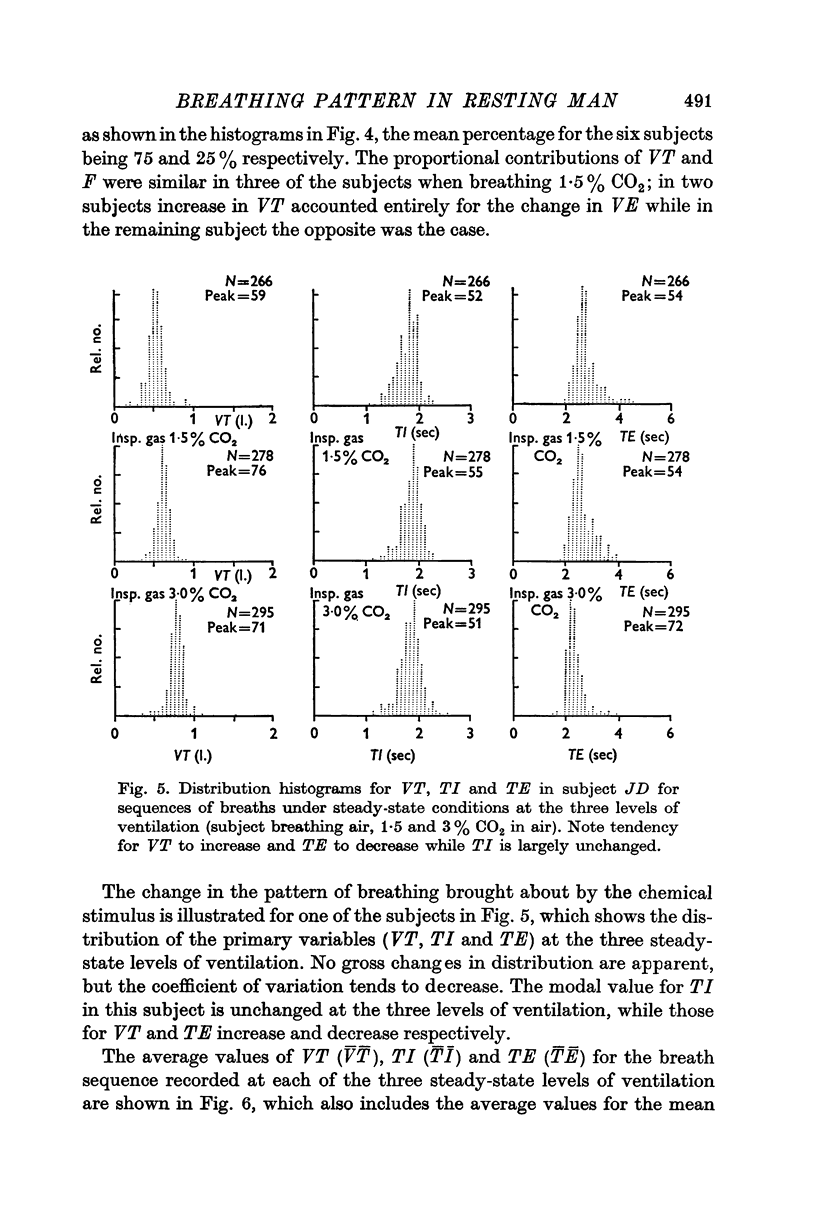
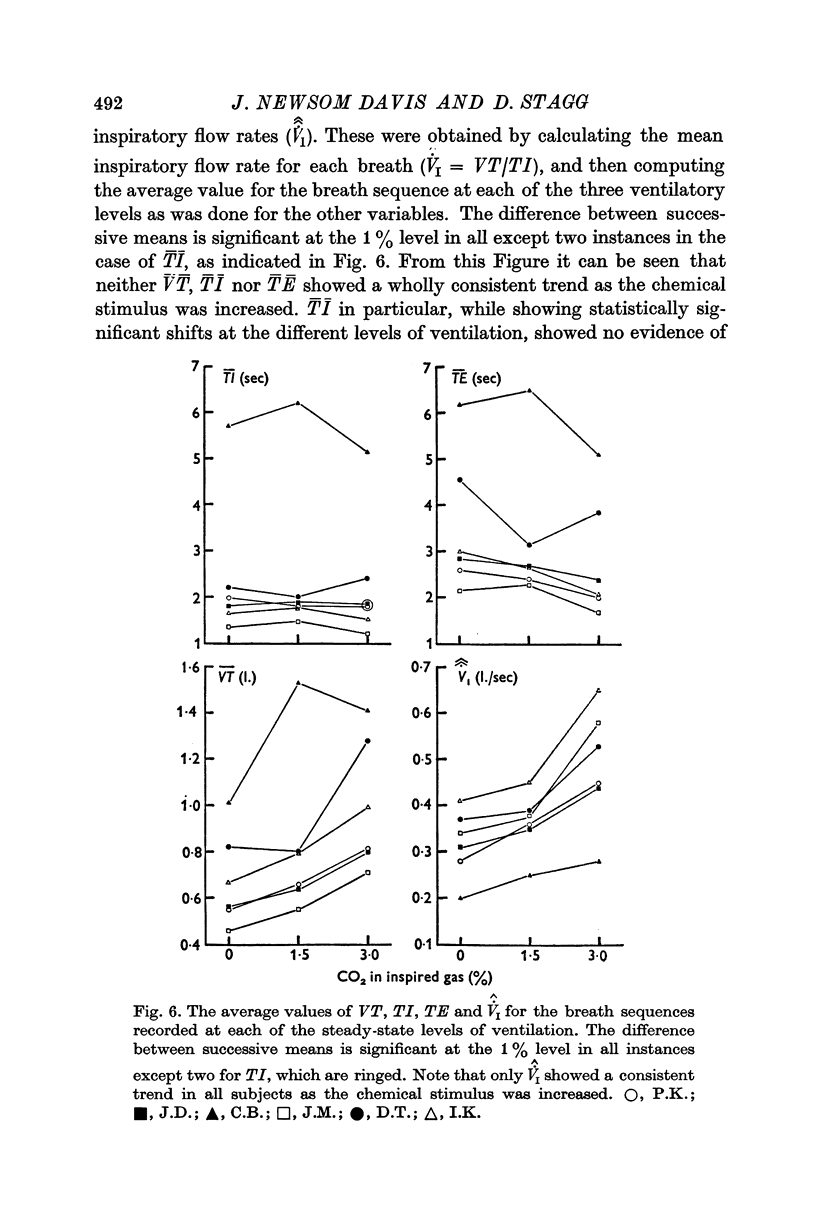
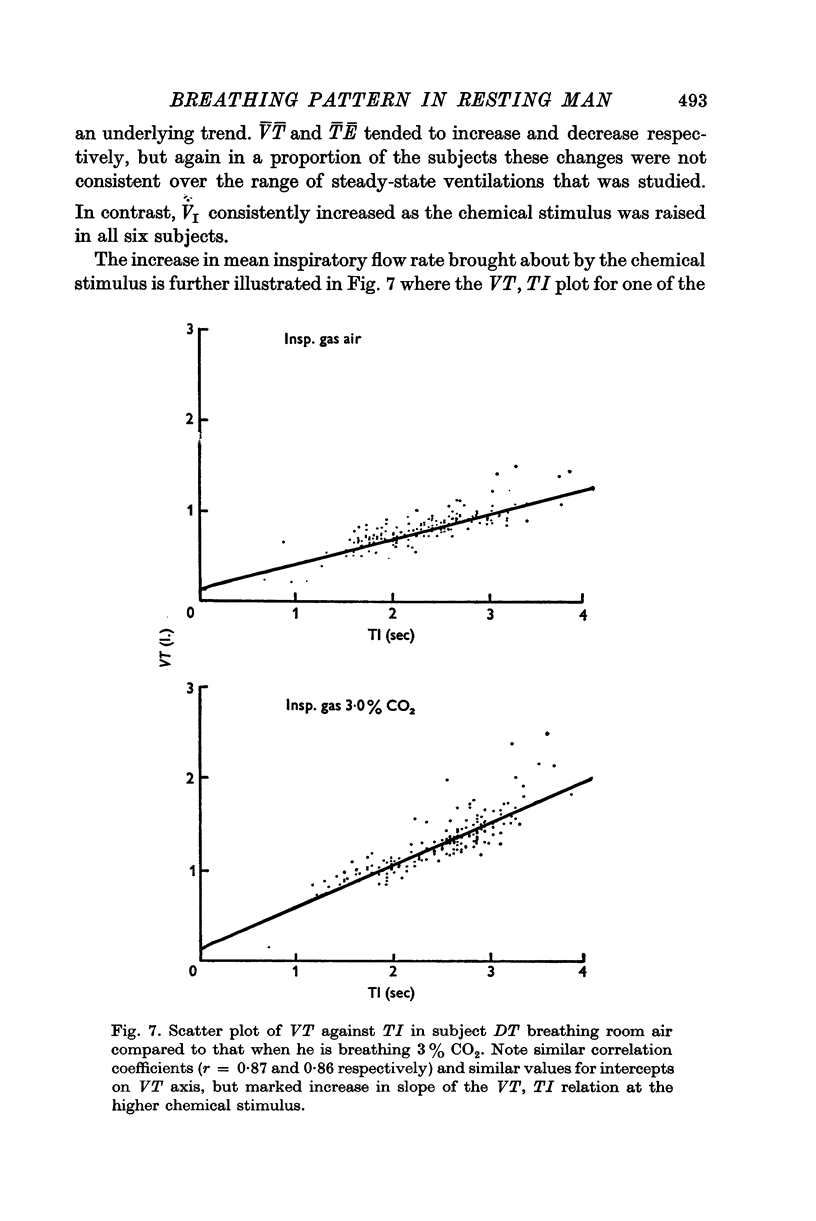
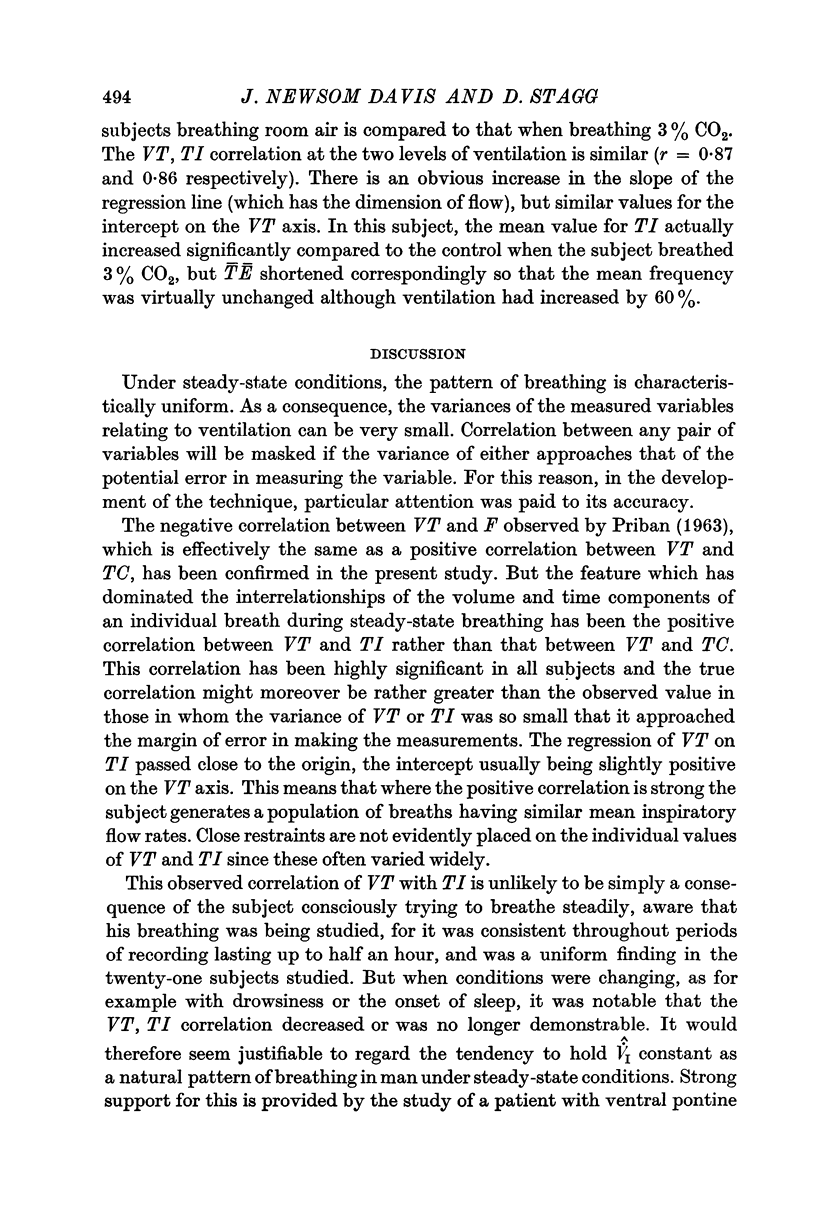
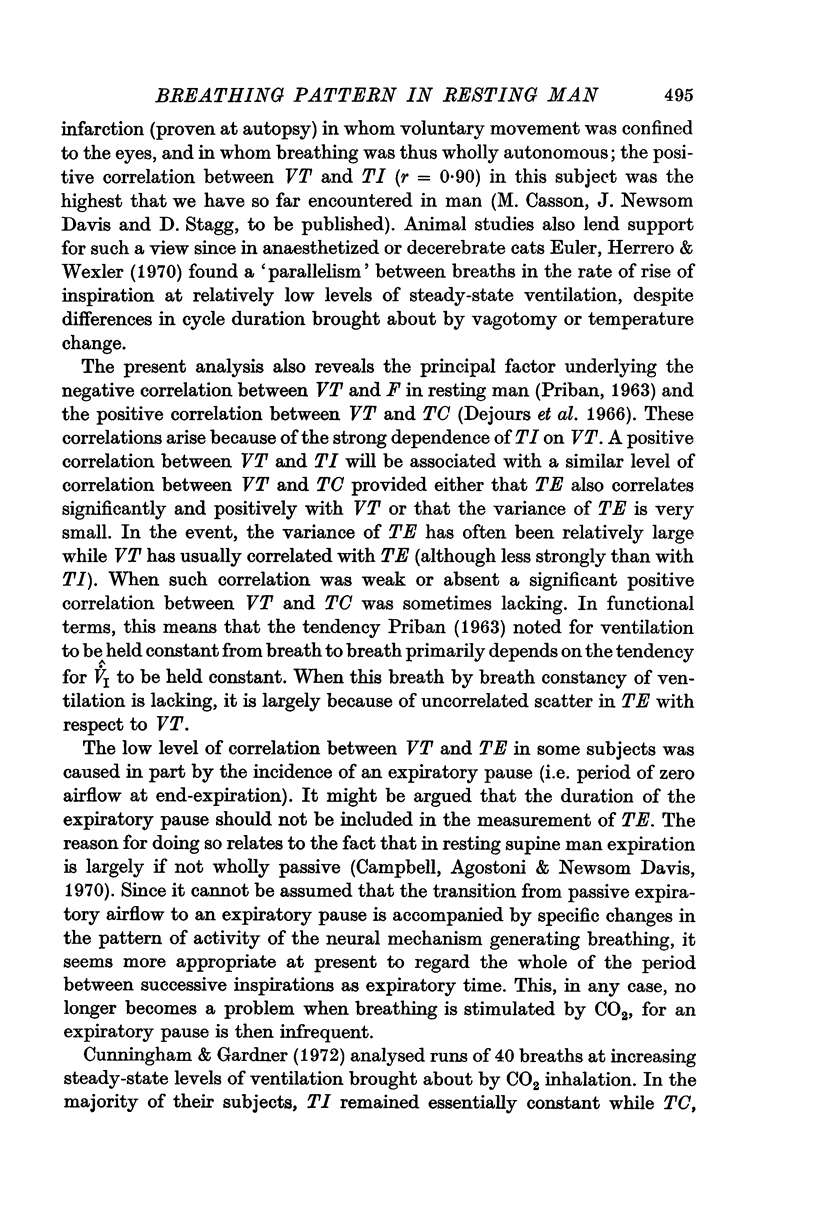

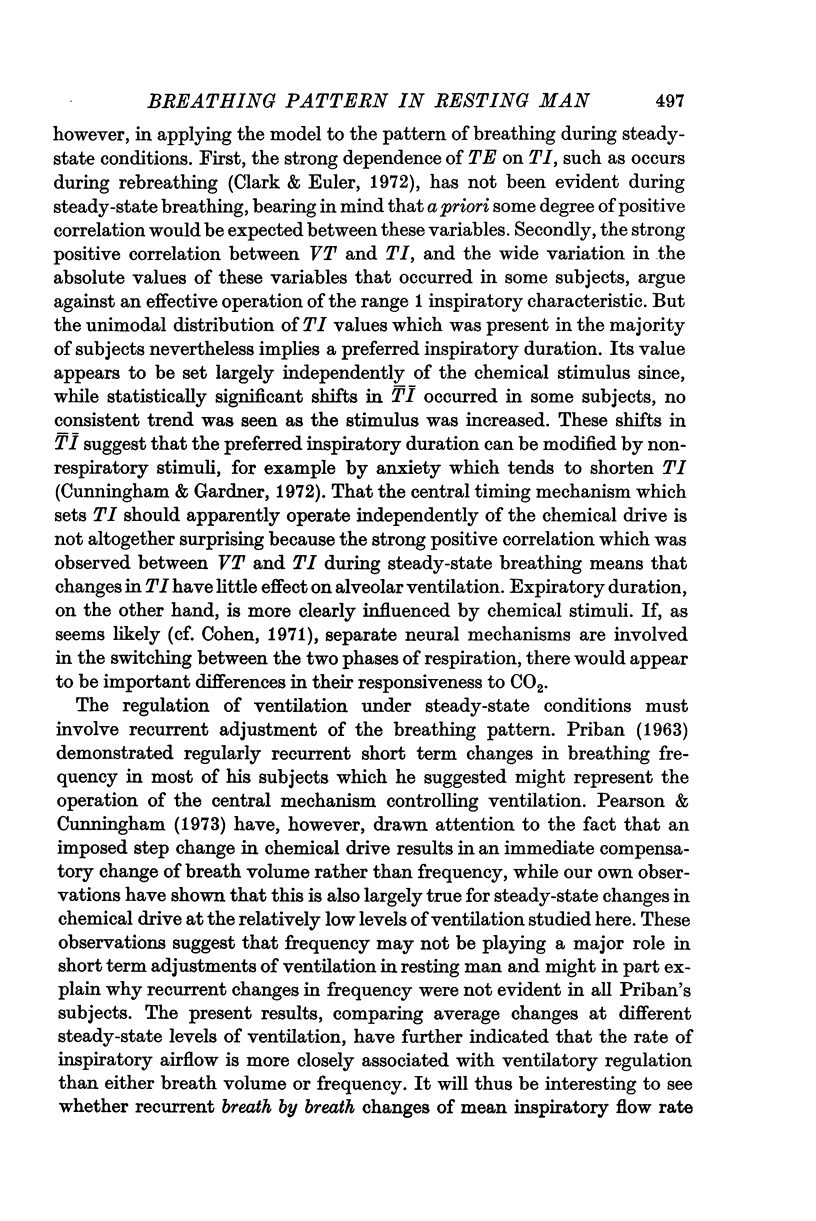
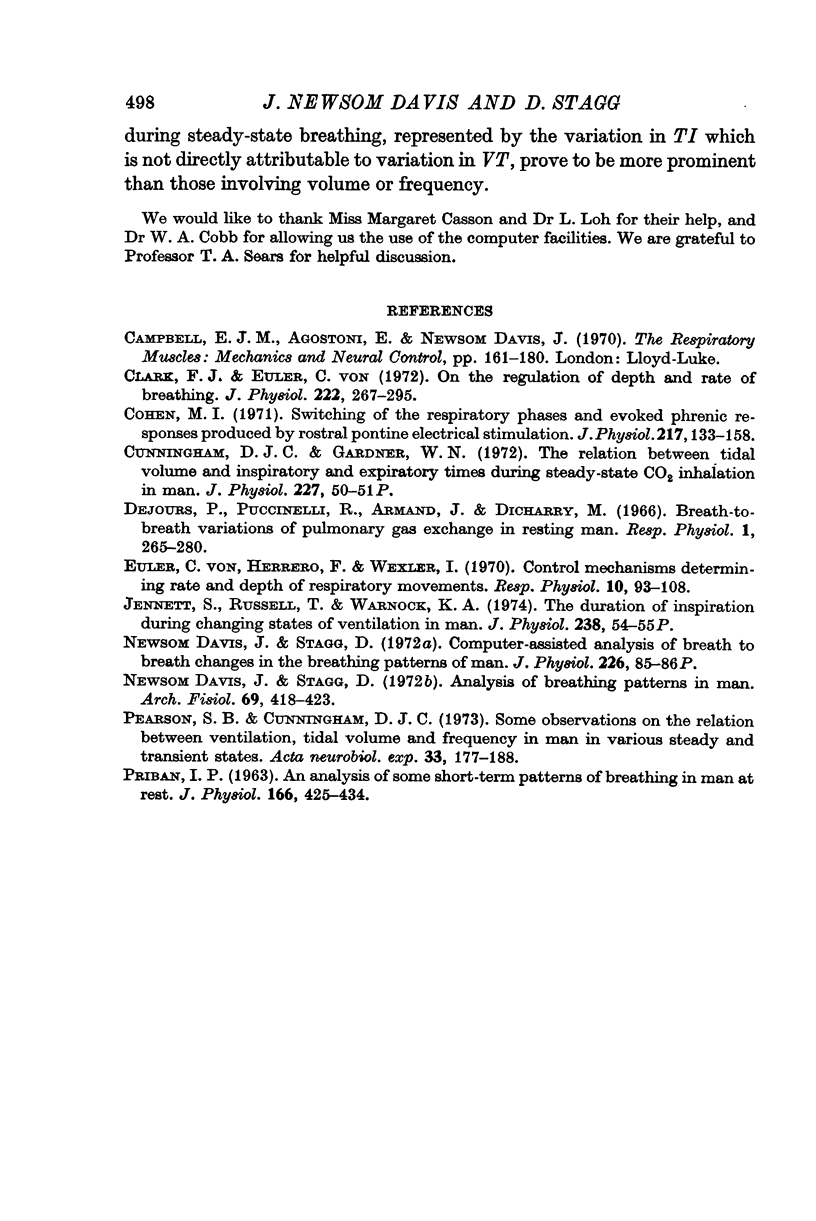
Selected References
These references are in PubMed. This may not be the complete list of references from this article.
- Clark F. J., von Euler C. On the regulation of depth and rate of breathing. J Physiol. 1972 Apr;222(2):267–295. doi: 10.1113/jphysiol.1972.sp009797. [DOI] [PMC free article] [PubMed] [Google Scholar]
- Cohen M. I. Switching of the respiratory phases and evoked phrenic responses produced by rostral pontine electrical stimulation. J Physiol. 1971 Aug;217(1):133–158. doi: 10.1113/jphysiol.1971.sp009563. [DOI] [PMC free article] [PubMed] [Google Scholar]
- Dejours P., Puccinelli R., Armand J., Dicharry M. Breath-to-breath variations of pulmonary gas exchange in resting man. Respir Physiol. 1966;1(3):265–280. doi: 10.1016/0034-5687(66)90046-6. [DOI] [PubMed] [Google Scholar]
- Jennett S., Russell T., Warnock K. A. Proceedings: The duration of inspiration during changing states of ventilation in man. J Physiol. 1974 Apr;238(1):54P–55P. [PubMed] [Google Scholar]
- PRIBAN I. P. An analysis of some short-term patterns of breathing in man at rest. J Physiol. 1963 May;166:425–434. doi: 10.1113/jphysiol.1963.sp007114. [DOI] [PMC free article] [PubMed] [Google Scholar]
- Pearson S. B., Cunningham D. J. Some observations on the relation between ventilation, tidal volume and frequency in man in various steady and transient states. Acta Neurobiol Exp (Wars) 1973;33(1):177–188. [PubMed] [Google Scholar]
- von Euler C., Wexler I., Herrero F. Control mechanisms determining rate and depth of respiratory movements. Respir Physiol. 1970 Jul;10(1):93–108. doi: 10.1016/0034-5687(70)90030-7. [DOI] [PubMed] [Google Scholar]


